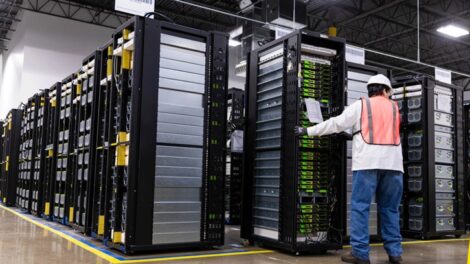As the digital landscape evolves, the integration of Digital Rights Management (DRM) in 5G networks presents a transformative frontier. This article delves into the challenges and opportunities inherent in combining DRM with the capabilities of 5G, reshaping the landscape of content protection and distribution.
- The Intersection of DRM and 5G Networks
Understanding 5G’s Role: 5G networks are synonymous with high-speed, low-latency connectivity, providing a robust infrastructure for the seamless transmission of data. Integrating DRM into 5G networks becomes pivotal in ensuring that the benefits of this advanced technology extend to secure content distribution.
Dynamic Content Delivery: DRM in 5G networks facilitates dynamic content delivery, enabling high-quality streaming, instant downloads, and real-time access. This synergy enhances user experiences while maintaining stringent content protection measures.
- Challenges on the Horizon
Increased Bandwidth and Content Vulnerability: The higher bandwidth of 5G networks, while a boon for faster data transfer, presents challenges for DRM. The sheer speed at which content can be transmitted requires DRM systems to evolve, ensuring content remains secure during rapid data exchanges.
Edge Computing and Security Concerns: 5G’s reliance on edge computing for faster processing introduces security concerns. DRM systems must adapt to secure content at the edge, addressing potential vulnerabilities in distributed computing environments.
- Opportunities Unleashed by 5G-Driven DRM
Enhanced User Experiences: The amalgamation of 5G and DRM unlocks opportunities for unparalleled user experiences. High-quality video streaming, immersive augmented reality (AR), and virtual reality (VR) applications become more accessible, enriching the digital landscape.
Ubiquitous Access and Device Agnosticism: 5G empowers DRM to provide ubiquitous access across devices. The enhanced connectivity allows users to seamlessly access protected content on various devices, fostering a device-agnostic content consumption experience.
- Advancements in Adaptive Streaming
Real-Time Adaptability: DRM in 5G networks facilitates real-time adaptability in streaming quality. As network conditions fluctuate, DRM systems dynamically adjust the streaming quality, ensuring a continuous and buffer-free viewing experience for users.
Personalized Content Delivery: Leveraging the capabilities of 5G, DRM can personalize content delivery based on user preferences and behavior. This not only enhances user satisfaction but also allows content providers to tailor offerings for specific audiences.
- The Role of Blockchain in 5G-Driven DRM
Enhanced Security Through Decentralization: The integration of blockchain technology in 5G-driven DRM introduces enhanced security through decentralization. Blockchain’s tamper-resistant nature ensures that access controls, user rights, and content licenses remain secure and transparent.
Smart Contracts for Automated Rights Management: Smart contracts in blockchain can automate digital rights management in DRM. Content distribution, access permissions, and royalty payments can be seamlessly executed through smart contracts, reducing administrative overhead.
- Industry Applications of 5G-Enabled DRM
Telemedicine: In the healthcare sector, 5G-enabled DRM facilitates secure transmission of sensitive medical data, ensuring patient confidentiality in telemedicine applications. This paves the way for enhanced remote healthcare services without compromising data security.
Immersive Entertainment Experiences: Industries such as gaming and entertainment leverage 5G-driven DRM for immersive experiences. Real-time multiplayer gaming, ultra-high-definition streaming, and AR/VR applications thrive on the high-speed, low-latency nature of 5G networks.
- Future Trends and Innovations
AI-Powered Content Protection: The future of DRM in 5G networks involves AI-powered content protection. Artificial Intelligence algorithms will play a crucial role in analyzing patterns, identifying potential threats, and adapting DRM software measures in real-time to counter evolving cybersecurity challenges.
Zero-Trust Security Models: 5G-driven DRM is poised to adopt zero-trust security models. This approach ensures continuous authentication and validation of users, devices, and content, offering a more robust defense against unauthorized access and content piracy.
Conclusion: Paving the Way for a Secure 5G Content Era
As DRM converges with the capabilities of 5G networks, a new era of content distribution unfolds. Navigating challenges and harnessing opportunities, this synergy promises not only enhanced security but also a revolutionary shift in how digital content is accessed, consumed, and protected in the high-speed realms of 5G networks.








